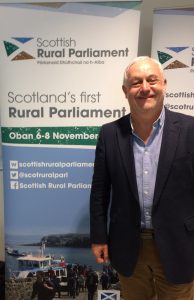We all know that living in the countryside may mean having to travel further to access shops, schools, GP surgeries and hospitals, while some services available in urban areas are simply unobtainable. Communities may complain that they are overlooked and individuals sometimes feel isolated. Rural proofing is intended to address these kinds of inequalities but is it really the magic bullet that will solve everyone’s problems?
The UK Government defines the process thus: “Rural proofing is integral to the policy making cycle. It requires us to make sure that the needs and interests of rural people, communities and businesses in England are properly considered. This applies to the development and implementation of all policies and programmes. For central government, rural proofing means assessing policy options to be sure we get the fairest solutions in rural areas.”
 What could be better or more desirable than ensuring fairness all round when you are designing policies? But like most things in life, the reality is much more complicated. The questions we should be asking seem simple: what is rural, who is disadvantaged and what are the problems policies need to address? Unfortunately this is seldom the starting point for policymaking.
What could be better or more desirable than ensuring fairness all round when you are designing policies? But like most things in life, the reality is much more complicated. The questions we should be asking seem simple: what is rural, who is disadvantaged and what are the problems policies need to address? Unfortunately this is seldom the starting point for policymaking.
In my career as a social scientist working in rural studies I have spent a lot of time looking at the ways in which governments try to design and implement policies that are “fair” to both urban and rural communities. It is a challenge that faces governments worldwide and rural proofing seems to offer a useful tool. But too easily it becomes an all-purpose mallet to be applied without precision across cultures and circumstances. In some instances it seems to miss the mark completely.
In 2015 I was able to spend a month in Monash University in Melbourne to do research on rural proofing there and to have discussions and to provide a briefing paper and presentations about it for policy makers. I quickly realised that their thinking about “rural” focused on what the Australians refer to as “the country”. It is a term that has a pleasant old world sound to it, a nod to European roots. But it fails to take into account the truly remote outback which is home to indigenous Australians or to consider the very real disadvantages they experience. In Australia – as in the UK – how you define “rural” is highly politicised.
Rural proofing as a concept originated with the English Rural White Paper in 2000. My colleagues here in the Centre for Rural Economy have long been concerned with rural proofing, and Jane Atterton wrote in 2008 that the concept needed to be reviewed. Since then more critical questions have been asked, by the House of Commons in 2009 and the OECD in 2011. It is an English concept, and applying it more widely is always destined to be problematic. But even in England such a blanket approach often feels inappropriate. In a recent Lords debate Lord Beith (formerly an MP for a rural constituency himself) argued in favour of rural proofing and observed “Surely we cannot allow ourselves to stumble into a situation where you have to be well off to live in the countryside”. Given the discrepancy between house prices in city and countryside, living in a rural area in England is already well beyond the pockets of many people. Indeed, England is an anomaly in having a countryside that represents aspiration more often than it does deprivation. Of course you will find some disadvantaged communities and individuals there, but can rural proofing address such specific needs? Can it truly ensure that elusive “fairness”?
Scotland has always been more wary of rural proofing, arguing for a much more targeted approach via its Highland and Islands Council. Northern Ireland, on the other hand, is currently developing a guidance framework for rural proofing, very much following the English model, but related to its own Rural Needs Act. In work I am carrying out with colleagues at the Northern Ireland Agri-Food and Biosciences Institute for the Department of Agriculture, Environment and Rural Affairs, we have highlighted concerns that such a blanket approach could result in unrealistic wish lists, regardless of practical and resource constraints. Providing “equitable” services cannot mean providing the same services in town and country. A small rural school or health provider may be popular locally but provide a poor service when measured against what is available in urban areas. If this is the case, local facilities should not automatically be protected via rural proofing, rather than being amalgamated in order to achieve improved services.
Rural areas are different from towns and cities and the needs of their residents are often different. But relying on rural proofing to address every rural problem will not ensure fairness. All too often it is a process implemented as a rural vote-catcher by governments as they approach election time. A more useful strategy would be to identify specific problems then design the policy to address those. If you do not know what needs fixing, how can you target an effective solution?
Sally Shortall is the Duke of Northumberland Professor of Rural Economy, in Newcastle University’s Centre for Rural Economy












